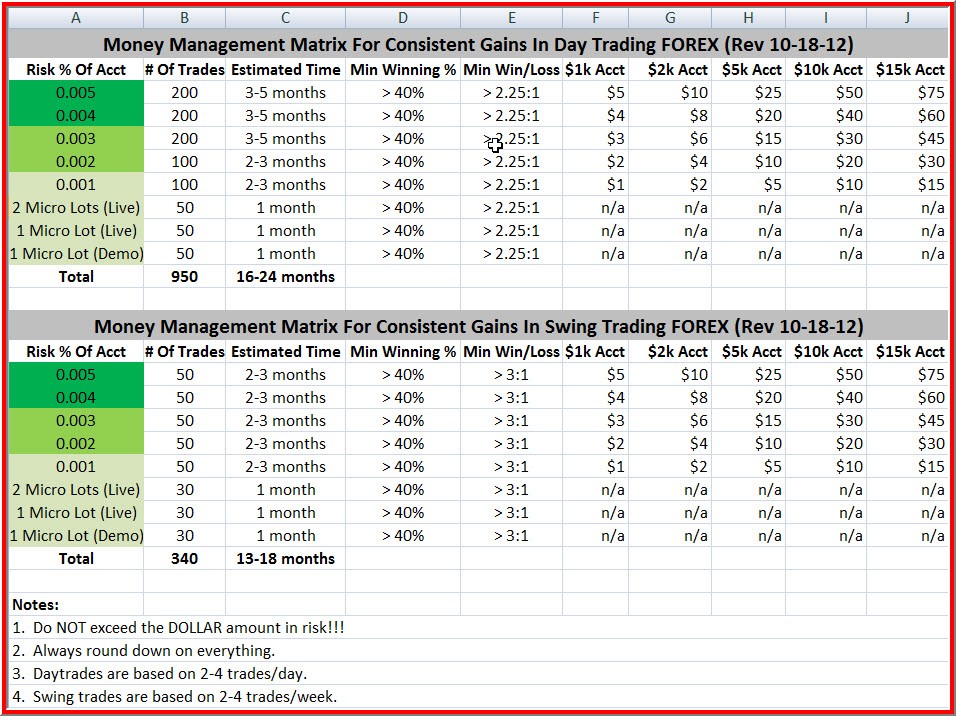Money management system #5 (Winning risk reward ratio)
Post on: 23 Июль, 2015 No Comment

Submitted by Edward Revy on August 25, 2009 — 02:51.
Risk/reward ratio is one the most influential parameters of any Forex system.
A good risk/reward ratio is able to make an unprofitable system profitable, while poor risk/reward ratio can turn a winning setup into a losing strategy.
What is risk/reward ratio?
Risk — simply referred to the amount of assets being put at risk. In Forex it is the distance of our Stop loss level (in pips) multiplied by the number of lots traded. E.g. a stop loss at 50 pips with 2 lots traded would give us a total risk of 100 pips.
Reward — the amount of pips we look to gain in any particular trade — in other words the distance to a Take Profit level.
Example of risk/reward ratio:
100 pips stop vs 200 pips profit goal gives us 1:2 risk/reward.
25 pips stop vs 75 pips profit gives 1:3 risk/reward ratio.
Why consider risk/reward ratio at all?
An average trading system which is able to produce at least 50% of winning signals automatically becomes profitable if its stop and profit targets are set at 1:2 risk/reward ratio or higher.
On the other hand, a trading system which is capable of delivering over 70% of winning signals can still be unprofitable in the long run if it shows poor money management with, for example, 3:1 risk/reward ratio.
Small risk — large reward: a winning formula used by professional traders
How do they do it? Let’s review some practical examples:
With low risk. high reward entries at the re-test of trend line, experienced trades can allow to be wrong multiple times before pulling out a winner, and still end up in profit.
Channeling, range bound markets also offer low risk. high reward trading opportunities. Besides, it is not only about getting in/out of a trade, but also about reviewing previous trends and positioning yourself in the direction of the most likely breakout, and in this way seeking additional profits plus once again eliminating the risk of stops being hit.
Wave traders like to ride market trends by entering on price retracement levels. These levels can be found using various studies and indicators: Fibonacci levels, support/resistance levels, trend lines, moving averages, which are treated as flexible trend lines, etc. All these studies help to see the points of retracement reversals.
When doing complex analysis of a retracement, special attention is paid to those price levels where two or more studies coincide in place and time with each other.
No matter what trading system you use, if you make sure your risk:reward ratio is set properly, you’ll be trading on a profitable side, even when the number of your losing trades is greater than the number of winning trades.














